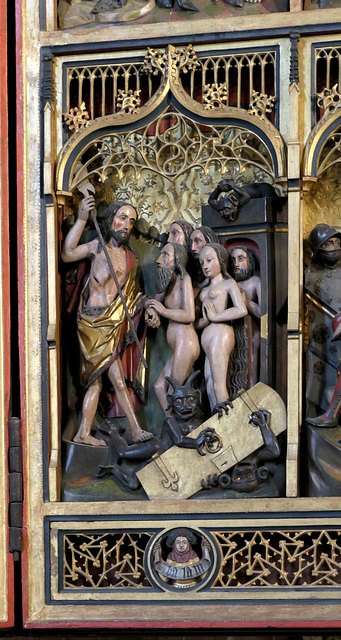Hannover - Markthalle
Hannover - Rathsapotheke
Hannover - Aegidienkirche
Hannover - Aegidienkirche
Heraklion - Agios Minas Cathedral
Heraklion - Agios Minas Cathedral
Heraklion - Agios Minas Cathedral
Heraklion - Agios Minas Cathedral
Heraklion - Agia Ekaterini
Heraklion - Agia Ekaterini
Heraklion - Agia Ekaterini
Heraklion - Agia Ekaterini
Heraklion - Agia Ekaterini
Heraklion - Agia Ekaterini
Heraklion - Agia Ekaterini
Heraklion - Agia Ekaterini
Heraklion - Evangelismos
Heraklion
Heraklion - Agios Titos
Heraklion - Agios Titos
Heraklion - Agios Titos
Heraklion - Agios Titos
Heraklion - Venetian Loggia
Hannover - Marktkirche
Hannover - Marktkirche (PiP)
Hannover - Landesmuseum
Hannover - Landesmuseum
Hannover - Landesmuseum
Hannover - Landesmuseum
Hannover - Landesmuseum
Hannover - Landesmuseum
Hannover - Landesmuseum
Hannover - Landesmuseum
Hannover - Landesmuseum
Hannover - Landesmuseum
Hannover - Landesmuseum
Hannover - Landesmuseum
Hannover - Landesmuseum
Hannover - Landesmuseum
Hannover - Landesmuseum
Hannover - Landesmuseum
Hannover - Landesmuseum
Hannover - Landesmuseum
Hannover - Landesmuseum
Hannover - Landesmuseum
Location
Lat, Lng:
You can copy the above to your favourite mapping app.
Address: unknown
You can copy the above to your favourite mapping app.
Address: unknown
See also...
Keywords
Authorizations, license
-
Visible by: Everyone -
All rights reserved
-
5 visits
Hannover - Marktkirche


With more than 500.000 inhabitants Hannover is the capital and largest city of the German state of Lower Saxony.
Hannover was founded in medieval times on the east bank of the River Leine. It was a small village of ferrymen and fishermen. It became a comparatively large town in the 13th century, receiving town privileges in 1241, owing to its position at natural crossroads It was connected to the Hanseatic city of Bremen by the Leine and was situated north-west of the Harz mountains so that east-west traffic passed through it.
Between 1714 and 1837 three kings of Great Britain were concurrently also Electoral Princes of Hanover.
As an important railway and road junction and production centre, Hannover was a major target for strategic bombing during WW II. More than 90% of the city centre was destroyed in a total of 88 bombing raids. So today Hannover lacks it´s medieval heart.
The Gothic Marktkirche (Marktkirche St. Georgii et Jacobi) replaced an older Romanesque church, which foundations were found during an excavation in 1952.
An appeal to the citizens for donations to build the church dates back to 1344, and work began on the foundations of the tower in 1347. Around 1360 the church was consecrated. In 1368, the construction of the church tower was interrupted due to times of emergency and plague and the resulting lack of money.
From 1852 to 1855, the interior of the church was restored. During the air raids on Hannover during WWII, the church was destroyed except for the outer walls and the columns. Reconstruction took place in 1946-1952.
The reredos of the high altar was originally a double-winged altarpiece. The altarpiece, created around 1480, was moved to the Aegidienkirche in 1663 during the installation of the Baroque altarpiece. From there, it was transferred to the Welfenmuseum during the renovation of the Aegidienkirche in 1856. It therefore remained undamaged during the WWII (except for the outer wings) and has been back in the Marktkirche since 1952.
With the wings open, 21 scenes depict the Passion of Jesus, based on graphic models by Martin Schongauer. At the lower edge are medallions of the heads of the prophets.
One of the scenes of the right wing is
Harrowing of Hell
Hannover was founded in medieval times on the east bank of the River Leine. It was a small village of ferrymen and fishermen. It became a comparatively large town in the 13th century, receiving town privileges in 1241, owing to its position at natural crossroads It was connected to the Hanseatic city of Bremen by the Leine and was situated north-west of the Harz mountains so that east-west traffic passed through it.
Between 1714 and 1837 three kings of Great Britain were concurrently also Electoral Princes of Hanover.
As an important railway and road junction and production centre, Hannover was a major target for strategic bombing during WW II. More than 90% of the city centre was destroyed in a total of 88 bombing raids. So today Hannover lacks it´s medieval heart.
The Gothic Marktkirche (Marktkirche St. Georgii et Jacobi) replaced an older Romanesque church, which foundations were found during an excavation in 1952.
An appeal to the citizens for donations to build the church dates back to 1344, and work began on the foundations of the tower in 1347. Around 1360 the church was consecrated. In 1368, the construction of the church tower was interrupted due to times of emergency and plague and the resulting lack of money.
From 1852 to 1855, the interior of the church was restored. During the air raids on Hannover during WWII, the church was destroyed except for the outer walls and the columns. Reconstruction took place in 1946-1952.
The reredos of the high altar was originally a double-winged altarpiece. The altarpiece, created around 1480, was moved to the Aegidienkirche in 1663 during the installation of the Baroque altarpiece. From there, it was transferred to the Welfenmuseum during the renovation of the Aegidienkirche in 1856. It therefore remained undamaged during the WWII (except for the outer wings) and has been back in the Marktkirche since 1952.
With the wings open, 21 scenes depict the Passion of Jesus, based on graphic models by Martin Schongauer. At the lower edge are medallions of the heads of the prophets.
One of the scenes of the right wing is
Harrowing of Hell
- Keyboard shortcuts:
Jump to top
RSS feed- Latest comments - Subscribe to the comment feeds of this photo
- ipernity © 2007-2025
- Help & Contact
|
Club news
|
About ipernity
|
History |
ipernity Club & Prices |
Guide of good conduct
Donate | Group guidelines | Privacy policy | Terms of use | Statutes | In memoria -
Facebook
Twitter

Sign-in to write a comment.